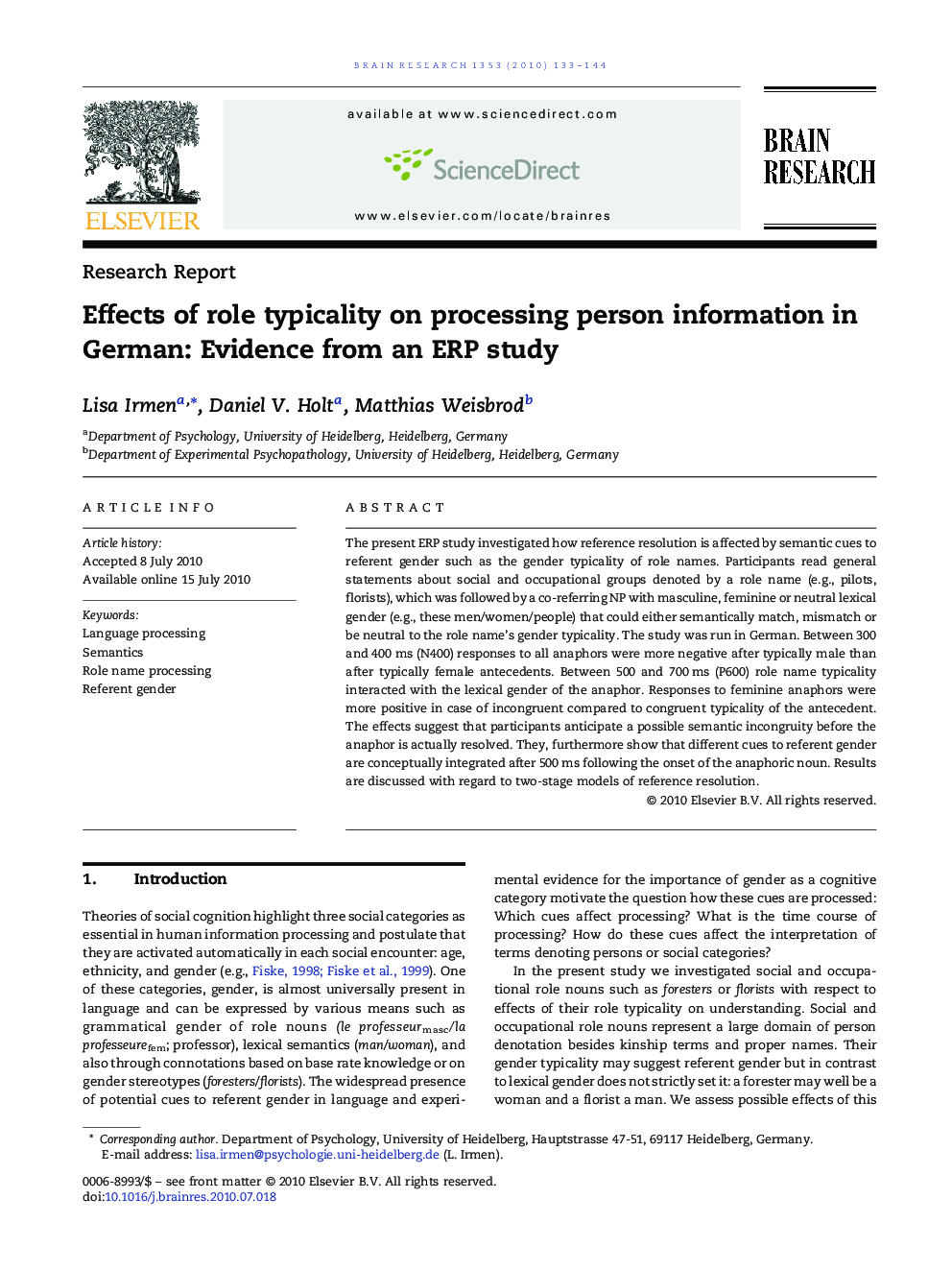| Article ID | Journal | Published Year | Pages | File Type |
|---|---|---|---|---|
| 4326522 | Brain Research | 2010 | 12 Pages |
The present ERP study investigated how reference resolution is affected by semantic cues to referent gender such as the gender typicality of role names. Participants read general statements about social and occupational groups denoted by a role name (e.g., pilots, florists), which was followed by a co-referring NP with masculine, feminine or neutral lexical gender (e.g., these men/women/people) that could either semantically match, mismatch or be neutral to the role name's gender typicality. The study was run in German. Between 300 and 400 ms (N400) responses to all anaphors were more negative after typically male than after typically female antecedents. Between 500 and 700 ms (P600) role name typicality interacted with the lexical gender of the anaphor. Responses to feminine anaphors were more positive in case of incongruent compared to congruent typicality of the antecedent. The effects suggest that participants anticipate a possible semantic incongruity before the anaphor is actually resolved. They, furthermore show that different cues to referent gender are conceptually integrated after 500 ms following the onset of the anaphoric noun. Results are discussed with regard to two-stage models of reference resolution.
Research Highlights►ERPs show effects of gender typicality on reference resolution in P600. ►Expectation of potential incongruity resulted in an N400 effect. ►Effects point to two stages in reference resolution, bonding and resolution. ►Semantic cues to referent gender are processed similarly by men and women.
